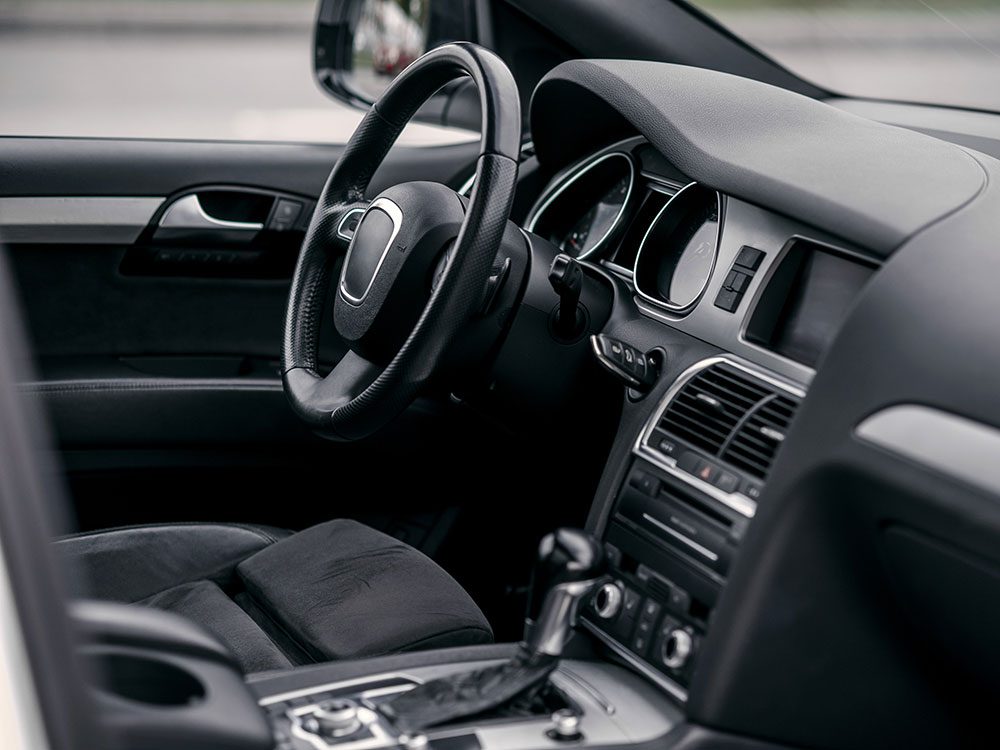
Clean the battery terminals
Like most car parts, your car battery requires maintenance if you want it to last. Check the battery and connections periodically to make sure that the connections are secure and free of dirt and grime. Batteries routinely develop a powdery substance where the cables meet the terminals. To remove it, start by disconnecting the cables. Then, in a small container, mix two tablespoons of baking soda with an equal amount of water and blend to form a paste. (Here are more great baking soda hacks.) Use a toothbrush to apply the paste to each terminal, followed by a wire brush to remove the residue. Finally, wipe the terminals dry with a clean towel before reconnecting them. There are also special corrosion cleaner sprays, terminal protection sprays, and battery terminal cleaning tools you can purchase to make this process easier. If they’re too far gone, follow these step-by-step instructions for replacing corroded battery terminals.

Drive regularly and avoid short trips
If your car stays parked for days on end or you use it only for short trips, the car battery won’t have sufficient time to recharge. Take extended trips on a regular basis to help the battery regain a full charge. (These top 10 Canadian road trips are a great place to find some inspiration!) If you know your vehicle will have extended periods of infrequent use, consider choosing an absorbed glass mat (AGM) battery, which is better equipped to withstand parasitic loads.
Find out more things that can happen to your car when you don’t drive it.

Be mindful of extreme temperatures
Between long, hot summers and extremely cold winters, nothing takes more of a toll on a car battery than extreme temperatures. Don’t forget to test your battery in every season—not just when it gets cold.
Follow this troubleshooting guide the next time your car won’t start.

Keep all accessories off when starting the engine
Accessories such as climate control, seat warmers, heated steering wheels, lights, and audio, communications and navigation systems are all a drain on your car’s battery. When starting your vehicle, particularly in cold weather, make sure that all accessories are off. If you can control your car remotely, ensure the accessories are off before starting it.
Find out more surprising reasons your battery keeps losing its charge.

Test your battery regularly
Testing your car’s battery can significantly reduce your chances of getting stranded with no power. To check your battery, connect it to a multimeter while your car is off. Hook up the red (positive) lead to the battery’s positive terminal, then the black (negative) lead to the negative terminal. Turn the meter to the DC volt setting and read the results. If your battery reads at least 12.4 volts, it is sufficiently charged and should continue to hold a charge. If the reading is below 12.4 volts, the battery may be able to accept a recharge. If not, replace the battery immediately. While a multimeter will give you a quick indication of your battery’s condition, it is not as reliable as the equipment at a professional garage or service centre. If you have any concerns about the reliability of your battery or if it is more than three years old, you should consult a professional to have it tested. Extending the life of your car battery comes down to proper care. Checking it regularly is all it takes to prevent an untimely breakdown.
Now that you know how to make your car battery last, find out how to charge a car battery.